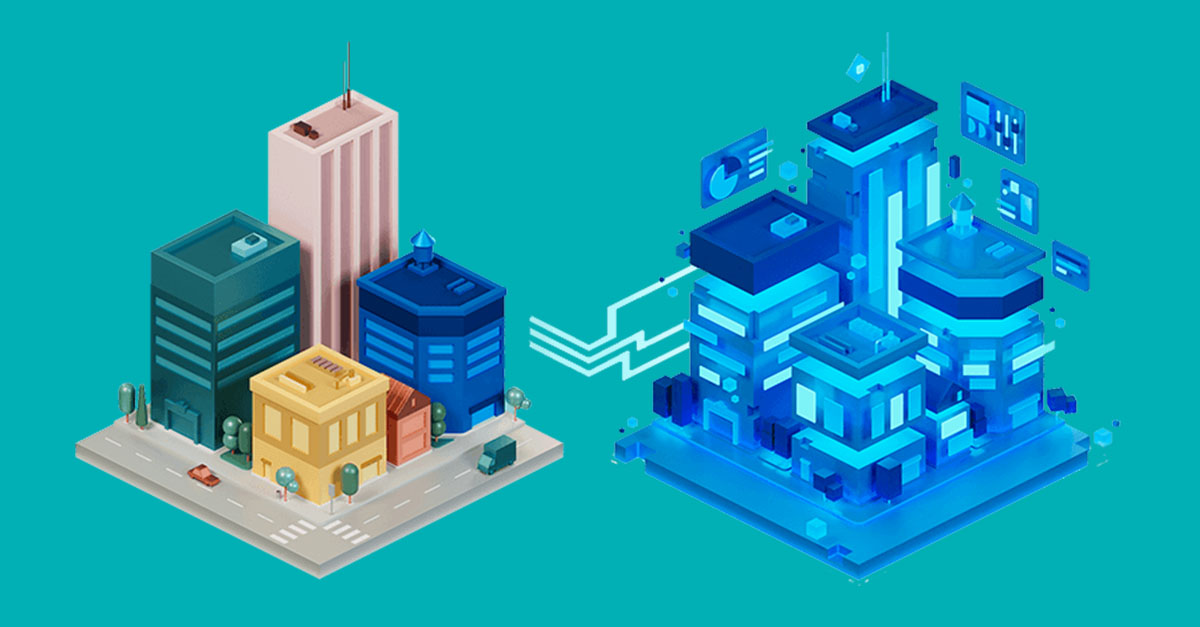Mixed-use developments have become a cornerstone of modern urban planning, blending residential, commercial, and recreational spaces into cohesive environments. By offering integrated living and working spaces, they address the demands of urban populations for convenience, connectivity, and sustainability. The increasing complexity of such projects calls for innovative solutions, and Artificial Intelligence (AI) has become a transformative force in this domain. AI optimizes design, enhances operational efficiency, and fosters vibrant communities within these developments. This article delves into the multifaceted role of AI in shaping mixed-use developments and its profound impact on the real estate industry.
Understanding Mixed-Use Developments
Mixed-use developments are characterized by their ability to integrate various functions within a single location. These developments include residential units, offices, retail spaces, entertainment hubs, and cultural or educational facilities. The concept is rooted in creating sustainable and self-contained urban environments, reducing reliance on long commutes, and promoting community engagement.
The Need for Mixed-Use Development
Urbanization is driving demand for innovative living solutions. As cities become more crowded, traditional zoning laws that separate residential, commercial, and industrial areas are proving inefficient. Mixed-use developments address these issues by:
- Reducing Commutes: By combining workspaces, homes, and amenities, they reduce travel times, benefiting the environment and quality of life.
- Promoting Sustainability: Integrating green spaces, efficient energy systems, and walkable layouts aligns with global sustainability goals.
- Fostering Community Engagement: Mixed-use spaces encourage interaction and create vibrant neighborhoods, enhancing social cohesion.
Despite their advantages, designing and managing these developments is complex, requiring advanced tools like AI to ensure efficiency and success.
AI Applications in Mixed-Use Developments
AI technologies are revolutionizing every phase of mixed-use developments, from planning and design to post-occupancy management. Let’s explore how AI is applied in these areas.
Smart Planning and Design
AI transforms the planning and design phases by enabling data-driven decision-making. Architects and urban planners can use AI to analyze vast datasets, including demographic trends, geographic information, and consumer behavior, to create optimized designs.
- Predictive Analysis: AI models predict how people interact with spaces, identifying potential challenges such as congestion, underutilization, or safety concerns.
- Generative Design: Tools like Autodesk’s generative design software use AI to produce multiple design iterations based on specific parameters, including budget, energy efficiency, and spatial requirements.
Using AI, planners can ensure that the layout of mixed-use developments meets the needs of diverse stakeholders, from residents to businesses.
Sustainability Integration
Sustainability is at the core of modern urban planning, and AI significantly enhances the environmental credentials of mixed-use developments.
- Energy Modeling: AI algorithms predict energy consumption patterns, helping designers incorporate efficient systems like renewable energy sources and smart grids.
- Real-Time Energy Management: AI continuously monitors energy usage, adjusting systems to minimize waste and optimize performance.
- Green Certifications: AI assists in achieving certifications such as LEED by analyzing and recommending designs that meet environmental standards.
By leveraging AI, developers can achieve sustainability goals while reducing operational costs.
Enhancing Tenant Experience
AI personalizes the tenant experience, making mixed-use developments more attractive and livable. It does so through several applications:
- Smart Building Systems: AI-powered building management systems (BMS) control heating, cooling, lighting, and security to ensure comfort and efficiency.
- Virtual Assistants: AI chatbots and virtual assistants streamline communication, handle maintenance requests, and inform tenants about community updates.
- Personalized Amenities: By analyzing tenant preferences, AI suggests services and amenities tailored to individual needs, enhancing satisfaction and retention.
A superior tenant experience translates into higher occupancy rates and stronger community ties.
Optimized Asset Management
Managing large-scale mixed-use developments involves monitoring numerous systems and assets. AI simplifies these processes by enabling predictive maintenance and operational efficiency.
- Predictive Maintenance: AI detects early signs of wear and tear in building systems, scheduling repairs before issues escalate. This minimizes downtime and reduces maintenance costs.
- Resource Optimization: AI monitors resource usage, such as water and electricity, to ensure it is used efficiently and sustainably.
- Occupancy Insights: By analyzing data on space utilization, AI helps property managers optimize layouts and reallocate resources to maximize value.
Effective asset management saves costs and enhances the appeal of mixed-use properties to tenants and investors.
Urban Mobility Solutions
Mobility is a critical component of mixed-use developments, given their multifunctional nature. AI enhances urban mobility by making transportation systems more efficient and accessible.
- Traffic Flow Optimization: AI analyzes traffic patterns within and around developments, recommending optimal road layouts and improving traffic flow.
- Smart Parking Solutions: AI-powered systems predict parking availability, guiding drivers to empty spots and reducing congestion.
- Autonomous Vehicles: AI facilitates the integration of autonomous shuttles and last-mile connectivity solutions, providing seamless transportation for residents and visitors.
By addressing mobility challenges, AI ensures that mixed-use developments are easily accessible and environmentally sustainable.
Retail and Commercial Space Optimization
Retail and commercial spaces are vital to mixed-use developments, providing economic vibrancy and convenience. AI optimizes these spaces by analyzing consumer behavior and market trends.
- Foot Traffic Analysis: AI tools track people’s movement within retail areas, helping businesses identify high-traffic zones and improve store layouts.
- Dynamic Pricing Models: AI adjusts lease terms for commercial tenants based on demand, ensuring developers’ profitability and businesses’ affordability.
- Targeted Marketing: AI-driven marketing campaigns attract the right audience, boosting footfall and sales.
These capabilities ensure that retail and commercial spaces remain vibrant and profitable in mixed-use developments.
Enhanced Security
Security is a top priority in mixed-use developments, where diverse populations and activities coexist. AI strengthens security through advanced surveillance and monitoring systems.
- Facial Recognition: AI-powered cameras identify authorized personnel and detect unauthorized access, enhancing building security.
- Crowd Management: AI analyzes crowd density during peak hours or events, ensuring safety and smooth evacuations if necessary.
- Incident Detection: AI systems monitor surveillance feeds in real-time, alerting security teams to unusual or suspicious activities.
AI-driven security measures instill confidence among tenants and visitors, contributing to the overall appeal of the development.
The Future of Mixed-Use Developments with AI
As technology evolves, AI’s role in mixed-use developments will only grow. Emerging trends such as digital twins, predictive analytics, and community engagement platforms are set to redefine the future of urban spaces.
Digital Twins

Digital twins are virtual replicas of physical assets that use AI to simulate real-world conditions. They have several applications in mixed-use developments:
- Design Validation: Developers can test multiple scenarios using digital twins to identify the most efficient layouts and construction methods.
- Operational Forecasting: AI-powered digital twins predict wear and tear on infrastructure, enabling proactive maintenance.
These capabilities improve decision-making, reduce risks, and enhance the longevity of developments.
Predictive Analytics
AI’s ability to analyze and predict market trends is invaluable for developers. Predictive analytics can forecast:
- Demand for Property Types: AI models identify trends in housing, retail, or office space demand, allowing developers to adjust their plans accordingly.
- Economic Shifts: AI predicts economic changes that could impact development viability, helping developers mitigate risks.
Predictive analytics ensures that mixed-use developments remain relevant and profitable in the long term.
Community Engagement
AI fosters stronger communities within mixed-use developments by enhancing communication and participation.
- Smart Apps: AI-powered applications connect residents, providing real-time updates on events, maintenance schedules, and promotions.
- Feedback Analysis: AI analyzes resident feedback to identify areas for improvement, ensuring a responsive and inclusive community.
These tools make mixed-use developments not just places to live but thriving communities.
Challenges in AI Implementation
Despite its benefits, AI adoption in mixed-use developments faces several challenges:
- Data Privacy Concerns: Collecting and managing tenant data requires robust security measures to maintain trust.
- High Initial Costs: Implementing AI systems involves significant investment, which can be a barrier for smaller developers.
- Skill Gaps: Developers may lack the technical expertise to effectively deploy and maintain AI systems.
Overcoming these challenges requires collaboration among stakeholders, including technology providers, policymakers, and real estate professionals.
Conclusion
Artificial Intelligence is redefining the landscape of mixed-use developments, making them smarter, more sustainable, and more responsive to users’ needs. By optimizing planning, enhancing tenant experiences, and improving operational efficiency, AI is a powerful tool for developers and urban planners. As these technologies continue to evolve, their integration into mixed-use developments promises to create dynamic, future-ready urban environments that cater to diverse needs. Embracing AI is not just an option but a necessity for building the cities of tomorrow.












